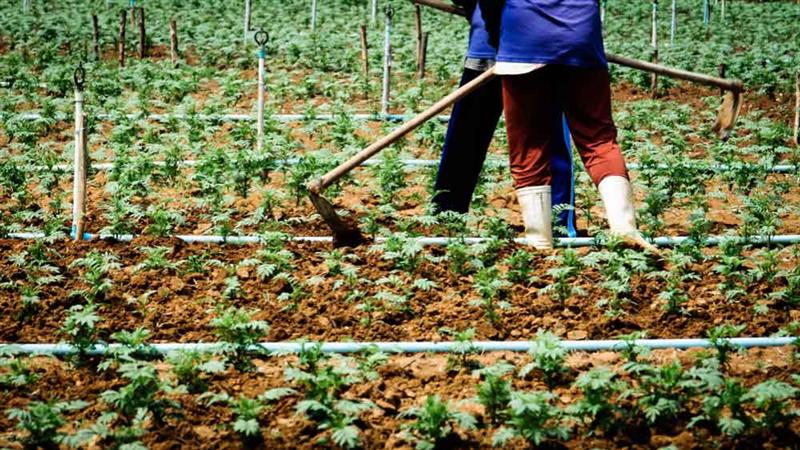
Table of Contents
For many homeowners, a vegetable garden is more than just an outdoor space-it’s a source of fresh produce, a way to maintain a healthy lifestyle, and an opportunity to reconnect with nature. Growing vegetables ensures that you have organic, chemical-free food and also offers a rewarding and stress-relieving experience. However, maintaining a thriving vegetable garden requires knowledge, effort, and dedication. From soil health to pest control, each aspect of gardening plays a crucial role in determining the success of your harvest. Here are some essential tips to help you keep your vegetable garden productive and flourishing throughout the growing season.
1. Understanding and Improving Soil Quality

Soil quality is the foundation of a healthy vegetable garden. Before planting, it is essential to test your soil for pH levels, nutrient content, and texture. Many home gardeners overlook this step, leading to poor plant growth and lower yields.
How to Test Your Soil:
- Use a home testing kit or send a sample to a local agricultural extension office.
- Ideal soil for most vegetables has a pH level between 6.0 and 7.0.
- Check for essential nutrients like nitrogen, phosphorus, and potassium.
Improving Soil Quality:
- Add organic compost to enhance soil structure and fertility.
- Use well-rotted manure to increase nitrogen levels.
- Introduce beneficial microbes with compost tea or mycorrhizal fungi.
- Consider crop rotation to prevent nutrient depletion and soil-borne diseases.
Also Read: Gardening Basics: Soil, Seeds, Water and Fertilizers
2. The Benefits of Raised Bed Gardening

Raised beds are an excellent option for maximising space and improving soil quality. They allow for better drainage, reduce soil compaction, and help control weeds more effectively.
Advantages of Raised Beds
- Prevents soil erosion and enhances root growth.
- Warms up faster in spring, extending the growing season.
- Reduces back strain by elevating garden beds, making maintenance easier.
- Minimises pest problems by creating a physical barrier.
To build a raised bed, use untreated wood, bricks, or metal, ensuring it is at least 12 inches deep to accommodate root growth.
3. Strategic Plant Spacing: Triangle-Shaped Planting

Efficient spacing of plants is key to maximising yield while preventing overcrowding. A triangular planting pattern allows for better airflow, reducing the risk of fungal diseases.
How to Space Your Plants Effectively
- Avoid planting in straight rows; instead, stagger plants in a triangle pattern.
- Maintain proper spacing according to plant needs (e.g., tomatoes require more space than carrots).
- Use intercropping methods, such as planting fast-growing crops like radishes between slow-growing crops like cabbages.
4. Vertical Gardening: Utilising Space Efficiently

If you have limited kitchen garden space, vertical gardening is a practical solution. Growing plants upwards instead of outward can save space while making harvesting easier.
Best Crops for Vertical Gardening:
- Tomatoes (support with stakes or cages)
- Cucumbers (train them on a trellis)
- Beans and peas (use a net or bamboo poles)
- Squash and melons (use strong supports for heavier fruits)
Vertical gardening also improves air circulation, reducing the chances of disease.
Also Read: Vertical Gardens – Creative Green Solution for Small Spaces!
5. Succession Planting for a Continuous Harvest

Instead of planting all your vegetables at once, consider succession planting. This involves planting in intervals so that you have a continuous supply of fresh produce throughout the season.
How to Implement Succession Planting
- Plant quick-growing crops (e.g., lettuce, radishes) every 2-3 weeks.
- Replace harvested crops with new plantings (e.g., after harvesting spinach, plant beans).
- Use different maturity varieties to ensure a steady supply.
6. Covering and Mulching Garden Beds

Mulching helps retain soil moisture, regulate temperature, and suppress weeds. Organic mulches, such as straw, bark, and compost, enrich the soil as they decompose.
Best Mulching Practices
- Apply a 2-3 inch layer around plants, avoiding direct contact with stems.
- Use biodegradable mulch for an eco-friendly approach.
- In colder months, use black plastic mulch to warm the soil.
7. Rainwater Harvesting and Smart Irrigation

Watering is crucial for plant health, but overwatering can lead to root rot and wasted resources. Rainwater harvesting is an eco-friendly way to collect and store water for irrigation.
Watering Tips
- Water deeply but less frequently to encourage strong root growth.
- Use drip irrigation to conserve water and target plant roots directly.
- Water in the early morning or late evening to prevent evaporation.
Also Read: DIY Rainwater Harvesting Ideas for your House
8. Companion Planting for Natural Pest Control

Companion planting is a technique where certain plants are grown together to benefit each other. This method helps in pest control, improves plant health, and increases yield.
Best Companion Planting Combinations
- Tomatoes & Basil: Basil enhances tomato flavour and repels pests.
- Carrots & Onions: Onions deter carrot flies.
- Corn & Beans: Beans provide nitrogen for corn, which offers support for climbing beans.
- Cabbage & Marigolds: Marigolds deter cabbage worms and aphids.
9. Protecting Your Kitchen Garden from Pests and Diseases

Pests and diseases can quickly ruin a thriving vegetable garden. Organic and preventive measures can keep them at bay without harming beneficial insects.
Organic Pest Control Methods
- Introduce beneficial insects like ladybugs and lacewings.
- Use neem oil or insecticidal soap to treat aphids and mites.
- Rotate crops each season to disrupt pest life cycles.
- Handpick pests like caterpillars and beetles early in the morning.
Also Read:
10 Easy Ways to Control Common Garden Pests!
7 Ways to Keep Your Garden Healthy
10. Preparing Your Kitchen Garden for Winter

Proper winter preparation ensures your soil remains fertile for the next growing season.
Winter Garden Maintenance Tips
- Remove dead plant material to prevent disease.
- Add compost to enrich the soil.
- Cover beds with mulch or a winter cover crop (e.g., clover) to protect soil structure.
- Store gardening tools properly to prevent rust and damage.
Also Read: Six Winter Plants That You can Plant in Your Home Garden
Conclusion
Maintaining a kitchen garden requires effort, patience, and strategic planning. You can cultivate a productive and sustainable vegetable garden by focusing on soil health, space management, proper watering techniques, and natural pest control. Whether you are a beginner or an experienced gardener, implementing these tips will help you enjoy a bountiful harvest while promoting eco-friendly gardening practices.
FAQs Regarding Kitchen Garden
1. How often should I test my garden soil?
It’s recommended to test your soil at least once a year, ideally before the growing season starts.
2. What vegetables grow best in raised beds?
Leafy greens, carrots, tomatoes, peppers, and root vegetables thrive in raised beds due to improved soil testing for the garden.
3. What is the best way to keep weeds under control?
Using mulch, planting cover crops, and hand weeding regularly can help control weeds naturally.
4. How can I make my garden more water-efficient?
Installing drip irrigation, using rain barrels, and watering at the right time of day can reduce water waste.
5. Which vegetables are easiest for beginners to grow?
Lettuce, radishes, carrots, zucchini, and green beans are great for beginners, as they require minimal maintenance.
By applying these practices, you can ensure a successful and thriving vegetable garden year after year!
Also Read:
Indoor Plant Care: Tips You Must Know!
Landscape Architecture | Creating A Blissful Outdoor Spaces!
How your Outdoor Patio can Change into your Private Retreat?






























